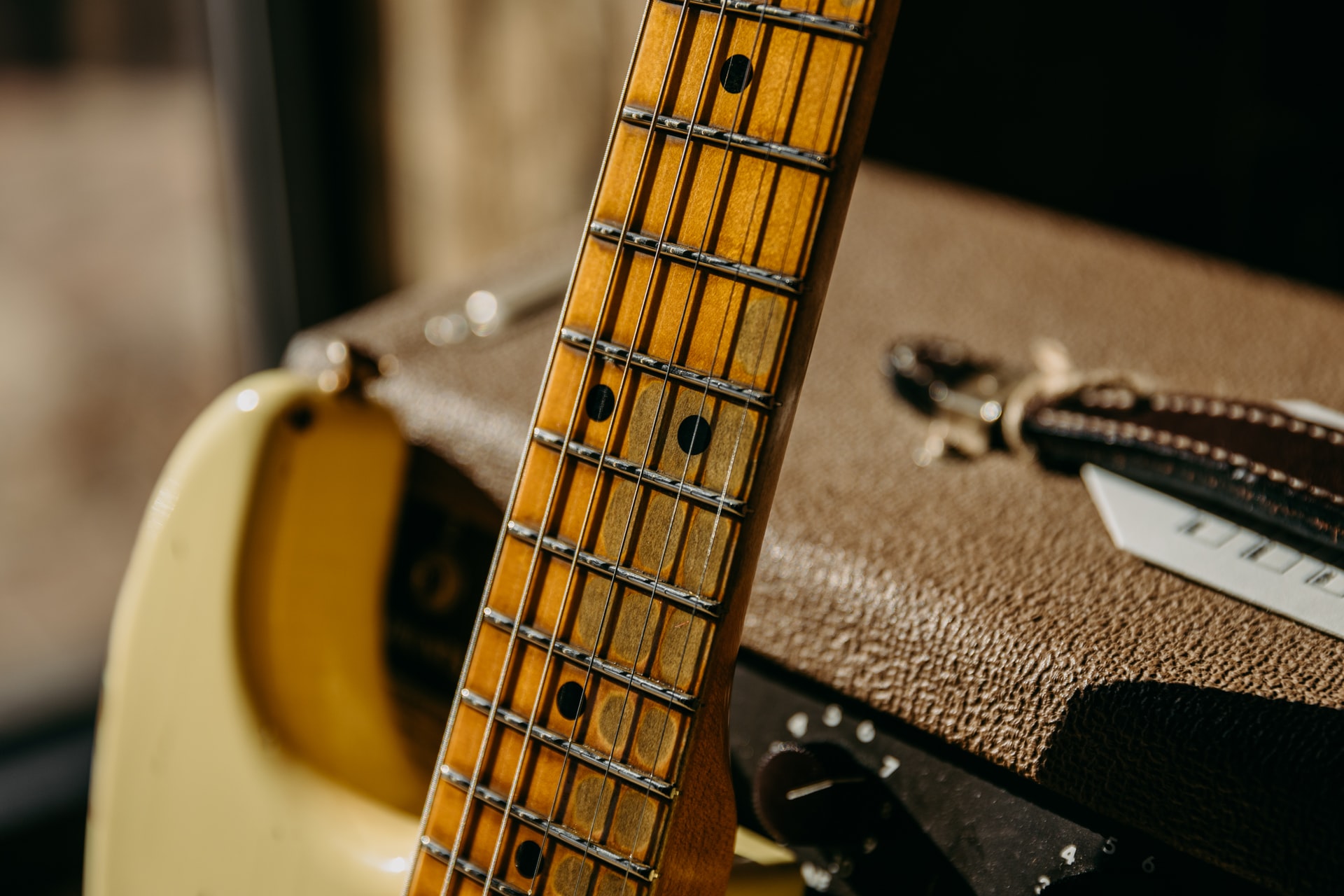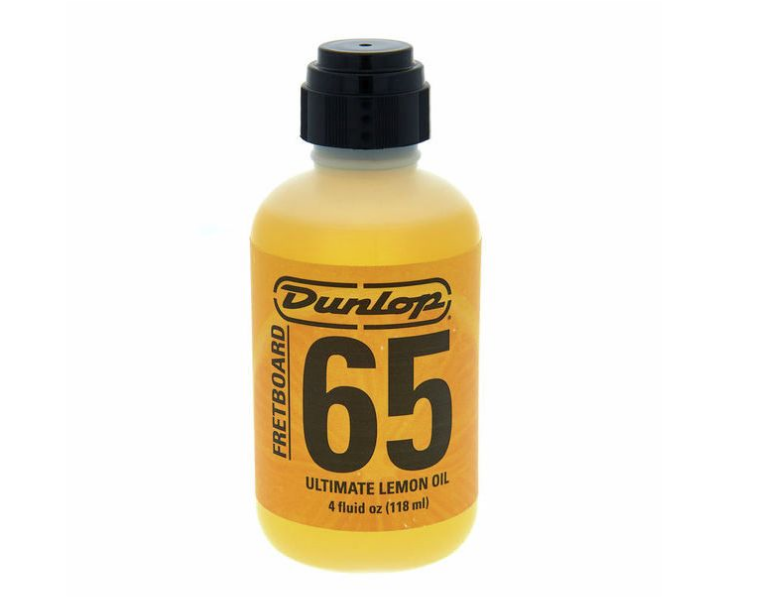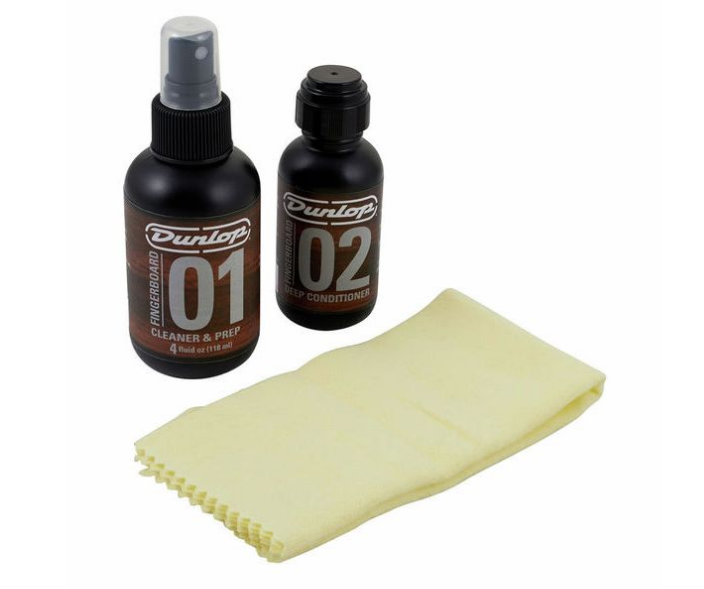Overlooking your guitar’s wellbeing until it starts to feel and sound in such a way that you don’t even want to pick it up is something that I think has happened to the best of us. Keeping tender care of it, cleaning it down, and ensuring it is put away after every session are ways of making your guitar last longer and last better.
I myself prefer to have it hanging in my living room because it makes me pick it up more often and just noodle around, so I have to spend a bit more on cleaning it than if I had it put away. Don’t overlook this until your only option is just to hand it over to the nearest luthier and sob.

How Ideal (or Not) Are Your Climate Conditions?
The heat of the heater or the fireplace in winter may be a blessing for us, but not so much for our guitar. If there’s one thing, a delicate instrument can’t stand, it’s the dryness of the air.
Got your guitar in your hands? Well, then slide your thumb and forefinger over the edge of the neck. If you notice the ends of the frets sticking out, then the wood has contracted, and you need to fix that. The dry air has deprived your guitar of moisture, and the wood has shrunk.
If your room doesn’t have the most optimal humidity, you may benefit from your intensive care session for weeks. With a bit of luck, the treatment sticks and becomes noticeable after a while. But the most elegant solution to keep instruments in good condition is special air humidifiers.
There are certain tools that can keep the humidity at a healthy level inside the guitar case itself, like the Daddario GHP Humidifier. There are other brands that are not too expensive, even as a Christmas gift or such.
If you don’t end up getting one, it is not a bad idea to check the guitar’s condition from time to time. This is where, surprise surprise, you can get a hygrometer. A hygrometer measures the humidity in the room you currently have your guitar in.

This is especially useful for acoustic guitars, and depending on where you live, it can give you an idea of how aggressive the conditions are for your axe.
The D’Addario Humidifier Pro protects your guitar even in the driest conditions.$19.00
$9.99
A clip-on hygrometer will set you back less than $10, and you can find one at your nearest music store or online.
However, suppose the guitar has been exposed to a dry environment for a long time and the frets have retracted.

In that case, the neck is sharp around the sides and there are even small splintered cracks, you should probably get it checked by a professional luthier.
If you don’t see any problems after the spring checkup, we’ve got the most cumbersome part out of the way, and all that’s left is to make the guitar look like new.
Polish frets, clean the neck fretboard, and polish the paint. Here are some tips and ways to do it with minimum tools.
The Fretboard
Not all woods are the same; not all varnishes are the same. This means that the first thing to do is find out what wood your guitar is made of, if it is lacquered and if so, with what varnish.
Perhaps the manufacturer has included care instructions – in any case; you should pay attention to the cleaning instructions as not all guitars are the same. If in doubt, talk to an expert.
The easiest way to clean the neck is when they are lacquered since you can use practically the same products and methods as for the body. However, special care must be taken with older guitars, as it is possible that the varnished layer is very thin or has lost its shine. In this case, the cleaning should be done dry, as cleaning products can discolour the neck.
Pro tip: Loosening the strings will make the job much easier.
How to Clean a Maple Fretboard

The guitars with varnished Maple fretboard are the easiest to maintain because they do not need any kind of hydration (oils). So we can clean the whole guitar (neck and body) with a dry cloth (if possible microfiber) or slightly dampen with water only- drying it immediately after. Although they are rare, we can find unvarnished maple fingerboard necks.
Being the most complex to maintain, they absorb dirt and sweat like a sponge. Having said that, the feel of unvarnished wood is appreciated by many guitarists, even with the problem of stains. Although staining is considered a plus for many, giving the neck a vintage feel.
Carnauba Wax is what is usually applied to these fretboards. The wax seals the pores of the wood, preventing the fingerboard from absorbing so much dirt and at the same time keeping it hydrated.
Dunlop Bodygloss 65 Cream of Carnauba Wax uses the highest grade carnauba wax in a proprietary formula. Polishes and beautifies your musical instruments, while hiding and sealing small cracks.
How to Clean Rosewood Fretboard

For Rosewood fretboards and also for Ebony fretboards, Lemon oil is used both for its hydration and for its cleaning.
Applying it uniformly with cotton lightly moistened in the oil (if the fretboard has dirt in excess, we would have to remove it before applying the oil).
Ultimate Lemon oil will remove grime and return your fretboard to its original luster quickly.

The ideal care for an unpainted rosewood or ebony neck is to treat it with other lemon oils, dedicated cleaning products such as the Dunlop Lemon Oil, or Dunlop Formula 65 Fretboard kit.
Everything you need for basic fingerboard care. Also includes 100% cotton polishing cloth, and care instructions.
Check out our complete guide on how to find the best guitar repair kits.
If you want to make sure your cloth will not scratch the surface at all, The PRS PS-ACC-3131 Polishing Cloth is one of the best products on the market.

If the dirt persists, the key is to let it soak for a while or use steel wool of 0000 or less. For those who prefer an all-in-one, I recommend using a special cloth like the GHS Gorgomyte.
This treatment to the fingerboard also depends on its state of dryness. Apply it gently if you see it too dull, and omit if the fingerboard has a slight shine.
Generally, applying lemon oil two or three times a year is more than enough.
The PRS Micro-Suede cleaning cloth is made from a polyester microfibre. It measures 12 x 13.5 inches and is washable.
The Frets
Tools for Сleaning Frets
What we are going to do with the frets is commonly known as fret dressing: making sure they’re not too flat, they’re not sticking out of the edges of the neck, and they are polished and shiny.
- Steel wool of 000 or 0000 (very thin). You will find it in drugstores or stores specialized in painting.
- A brush, be it a toothbrush or a nailbrush.
- Lemon oil. (if you want to go over the fretboard too).
- A rag or cloth.
- A plastic bag.
- Some adhesive tape. Preferably painter’s tape.
The first thing to do is to find a comfortable place to work, and by that, I don’t mean the sofa. It is convenient to be able to leave the guitar or bass on a table and with a support on the neck so that the fingerboard is completely horizontal. Above all, it is very important that this support is very firm since we are going to be shaking the instrument.
Remember to protect the guitar’s body, use foam or some soft material to support the bass on the table and make sure that it does not slip. To work on the frets comfortably, removing or completely loosening the strings will be necessary. You can take the opportunity to change them if they are very worn.
The process is straightforward: we fold a piece of steel wool in two or three folds so that we can rub comfortably by pressing with our fingers. What this micro polishing will do is to remove the sweat and dirt without damaging the fretboard. We rub well until we see that the frets shine again.
Once finished, we clean the fingerboard of aluminum particles and when there are none left, we remove the protective plastic of the pickups.
Another essential thing to do before crowning or sanding the frets is to protect the area of the pickups and the electronics. To do this, we will use the plastic bag: we will put it attached to the body with the adhesive tape just at the end of the fingerboard and cover the pickups well. This will prevent the magnetism of the pickups from attracting the particles that will come off the aluminum wool.
The Guitar Strings
After continuous use, strings lose their natural shine and accumulate a lot of dirt. And this dirt affects something fundamental: the sound. The best way to increase the life of a set of strings and a fret crowning is to have clean strings. The first thing to consider would be not to keep them dirty for too long.
Related: How to Properly Clean Guitar Strings
So before we start playing, you should wash your hands (especially in summer) to remove dirt, grease or sweat. Once the session is over, give the strings a quick clean using a string cleaner or a microfiber cloth. While you’re at it, clean the whole guitar with a soft cloth or kitchen paper, something that won’t cause scratches or wear on the lacquer of the guitar.
Cleaning the strings on a regular basis will make them last longer and, consequently, you will be able to save on new strings (which, after a year, is quite a lot of money). There are different products for cleaning the strings of your guitar, the most popular and also the most recommended by most guitarists out there are:
- String Cleaner 65 (Dunlop)
- GHS Fast Fret
- If not, a wet cotton cloth will do.

These products have several benefits over a wet cotton cloth and other benefits from their general use:
- They are not very oily, so they do not stain the guitar’s body.
- In two strokes, they leave your guitar as good as new.
- Their frequent application prevents them from rusting
- After using them, the touch is very soft and pleasant.
- Lubricates the strings
- You can also use them to clean the fretboard.
- They usually last a long time
- They are non-abrasive products
- They extend the life of the strings
- Perfumes the guitar
- They modify the guitar’s tone; it is as if it preserves the characteristic shine of new strings.
- They can be used to clean the neck (but are not suitable for other guitar parts).
Shields strings against tarnish and corrosion, extending their playing life.
Premium string and neck lubricant and string cleaner for all stringed instruments.$9.62
$7.99
Is It a Good Idea to Clean Your Strings Right before Playing?:
Some think that it increases the ease of sliding of the fingers on the strings (you will feel the strings go faster and run better) and that it increases the speed of movement on the neck. In short, they say that it helps you play with greater agility despite sweaty hands. But don’t freak out; it doesn’t necessarily mean that you will play better!
However, some say that if you are used to playing with some friction, wiping the product just before playing, you may not like the sensation because your hands will feel slippery.
How To Clean A Fretboard FAQ
Question: Can I use water to clean the fretboard of my guitar?
Answer: It depends on how dirty it is. Yes, a wet microfiber cloth will do the trick. Make sure to dry it down with a dry cloth afterwards.
Question: Can I use a toothbrush to clean my fretboard?
Answer: Yes, if you haven’t got steel wool, a toothbrush can work with some hydrate or special product. This is usually done when there is a lot of first that is impossible to clean off with a cloth.
Question: Can I use WD40 on my guitar?
Answer: You can but only on metal parts. Do not consider using it for the wooden parts.
Summary
The most eloquent way of summarizing everything up top is probably that even the bare minimum is better than nothing. A wet cotton cloth sometimes goes a long way, and any wooden instrument deteriorates over time.
Spending some time polishing down your guitar, cleaning your frets and polishing your strings will help conserve a crisp sound, a good look, and a good feel. This way, you’ll find yourself picking up your guitar much more and enjoying your instrument much more in the long run.
- Jimi Hendrix Guitars and Gear: A Comprehensive List - August 10, 2023
- Fender Frontman 212r Review and Guide - August 4, 2023
- How To Clean A Fretboard Properly - July 18, 2023









